Study on the Importance of Physical Education and Sports among the Students from Non-Profile Faculties within the University of Bucharest
Abstract
The purpose of this paper is to highlight that in higher education the physical education and sports activity represents a step forward compared to pre-university education, occupying an important place within the process of developing the student’s personality, fully contributing to the improvement of physical and moral qualities, the proper use of leisure time, the achievement of harmony in the student’s development. The organization of the activity on sports branches in non-profile higher education is the basis of students’ option for this discipline. The need for movement and the wish to improve their physical condition represent the motivation to participate in physical education classes. The study was conducted in the second week of the first semester of the university year 2014-2015 on 68 students in their first year, from almost all faculties of the University of Bucharest. We used direct interrogation, applied based on a standard questionnaire made up of 15 questions. The collected data were processed using the statistical and mathematical method, and the graphical method. Following the study regarding the importance of physical education for students from non-profile faculties, we have found that students believe that physical education is an important activity in their life, and even so, there is a very small number of students that practice sports outside their physical education class. The most frequently invoked reasons for the lack of interest as regards physical education are represented by the lack of time, indolence, material conditions, work spaces, the economic and financial factors.
Keywords: Physical education, questionnaire, sport disciplines
Introduction
The activity of physical education and sports in higher education is included in student educationmeans, their purpose being to contribute to developing healthy people, able to meet the demands of the today’s and future society.
We believe it is worth noting in this context the assessments of Kiriţescu on the importance of
physical education in works such as (1964): “Physical education is the conscious
physiological activity of the human body, led by the methods of pedagogy, seeking the health
maintenance and the increase in the biological potential of the individual, in order to increase their
social efficiency. It is closely associated with intellectual, moral and aesthetic education, being under
the dependence of the former and influencing the other two”.
Also, Bota and Șerbănoiu (2000) highlight physical education as a component of general education,
expressed by leisure time physical activity (together with sports training, competition, leisure time
activities, body expression and recovery activities) conducted in an organized manner or
independently, whose specifically designed content aims at optimizing the individual’s biophysical
potential, as well as the cognitive, affective and social-relational components determining an increase
in each one’s quality of life.
Because higher education is the last link in the educational system, physical education at this level
has the responsibility to actively put its mark on the process of development, conservation and
revitalization of students’ biological potential and vocation for moving (Dragnea et al., 2006).
Research on the same topic (Gulap, 2014) has shown that students are aware of the importance of
organized physical education activities for building a healthy lifestyle.
of this paper is to highlight the importance of physical education and sports in non-
profile faculties, as well as to know the students’ availability for practicing sports and find their
preferences in terms of sports disciplines they want to practice.
Organizing attractive, various physical education activities at the level of non-profile
higher education per sports branch reveals the students’ option for this curricular subject. The need for
movement and the wish to improve physical condition represent their motivations to participate in the
physical education class.
Materials and methods
The research method used was the direct investigation, based on a standard questionnaire. The
questionnaire was applied to a number of 68 students of which 20 males and 48 females, in the 1st year
of study, from almost all faculties of the University of Bucharest.
The study was conducted in the second week of the first semester of the university year 2014-2015.
For a better view of the collected data, we used for their processing the statistical and mathematical
method, and for their representation, we used the graphical and tabular method in order to emphasize
the evolution of the results in the studied period.
To develop the questionnaire, we started by establishing the specific objective aiming at its
evaluation, followed by the formulation of questions related to the way of analysing the responses and
establishing the form of questions, they being classified, from the scientific point of view, in open
questions and closed questions (Novak, 1977).
The 15-item questionnaire was applied to 68 students of which 20 males and 48 females, in the 1st
year of study, from almost all faculties of the University of Bucharest, in order to obtain an overall
image on the importance of physical education and sports among students.
Results
After applying the questionnaire, we obtained a series of data that were tabulated, and for a better
view of them and for drawing the conclusions, we used the graphical representation of data. The
interviewed students responded to questions as follows:
1. How important is physical education in your life?
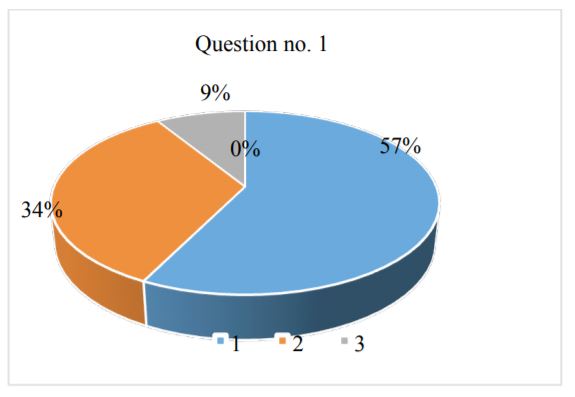
As we can notice in the graph, the opinions are different, 39 of the interviewed students considering
that physical education is important in their lives, 23 very important, while only 6 assert that physical
education is less important. None of the students says that physical education is not important. (Fig. 1)
2. For how long have you been practicing sports?
To this question, 15 students respond they have started practicing sports before going to school, 47
when starting the elementary school, and only 3 students since high school or faculty, respectively. (Fig. 2)
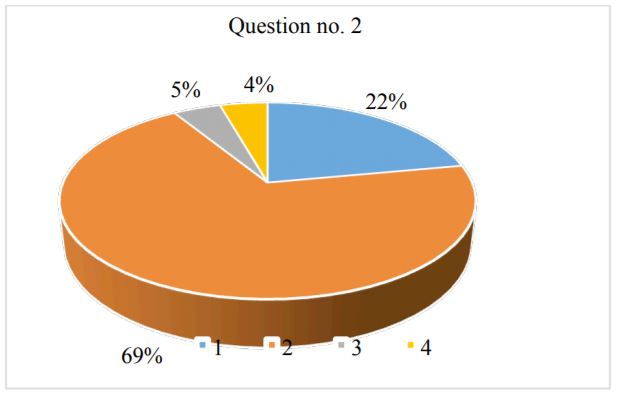
3. What sports did you practice?
According to the responses, we noticed that the students practiced between 2 and 3 sports as
follows: 1. Handball 33, 2. Volleyball 22, 3. Basketball 18, 4. Football 15, 5. Swimming 9, 6. Table
tennis and aerobic gymnastics 7, 7. Athletics 5, 8. Karate, badminton, fitness, ballet 4. (Fig. 3)
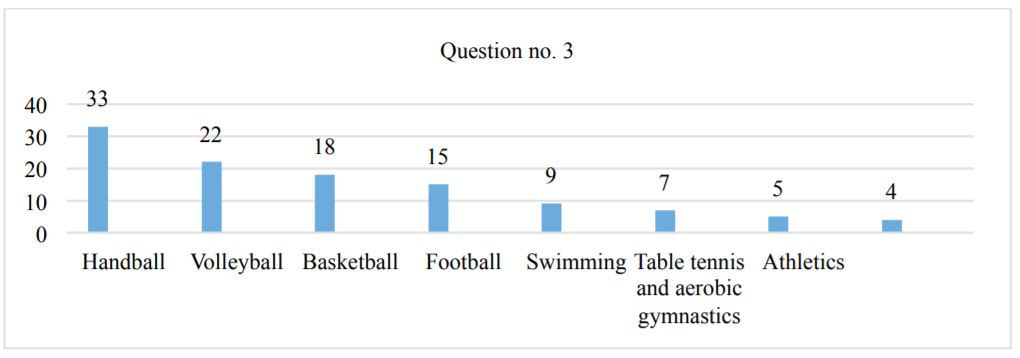
4. At what level? While 50 students occasionally practiced sports and 10 practiced performance sports, 50 practiced sports only during the school physical education class. (Fig. 4)

5. What sport/sports do you practice currently? According to the responses, the students’ preferences are greater for: 1. Aerobic gymnastic 11, 2. Fitness 9, 3. Dancesport 9, 4. Field tennis 10, 5. Volleyball 8, 6. Handball 7, 7. Badminton 7, 8. Basketball 5, 9. Other sports 2. (Fig. 5)
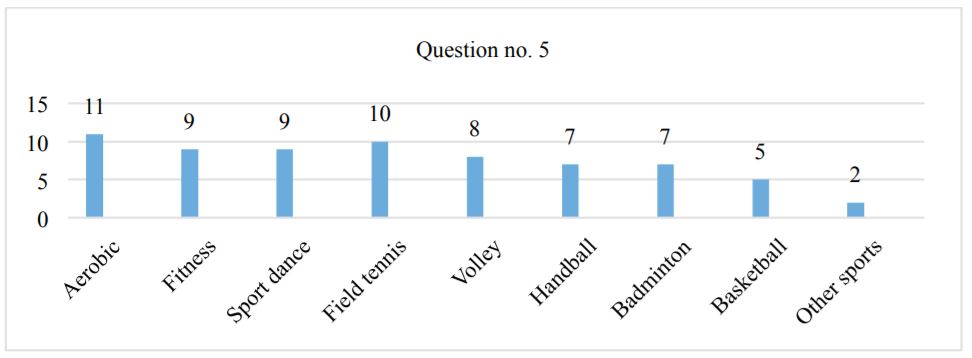
6. During high school, did you participate in physical education classes?
To this question, 58 students responded they frequently participated in those classes, 6 rarely, and only 4 were exempted or never participated in. (Fig. 6)
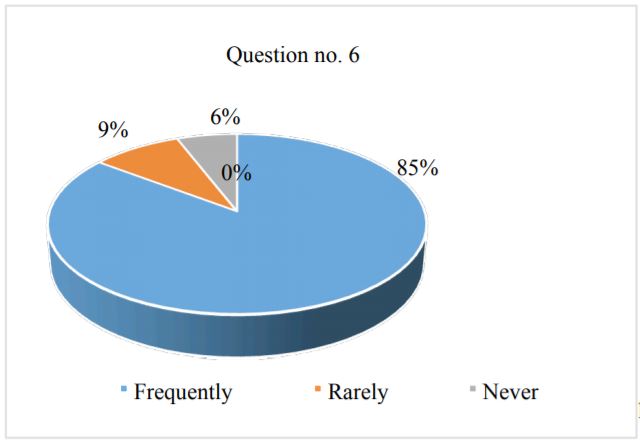
7. How were the physical education classes?
Regarding the physical education classes during high school, 40 students responded that classes
were always conducted as they should (adequate equipment, exercises, sports games, etc., under the
teacher’s guidance), 21 answered they were not always coordinated by the teacher, but the classes were
held, while 7 students said they were let to do what they wanted during the physical education classes. (Fig. 7)
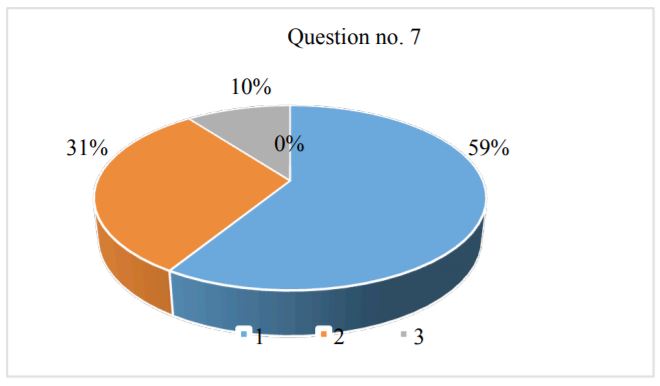
8. Did they organize competitions (during high school, at the county/ inter-county level, etc.)?
As we can notice in the graph, 51 students responded that competitions were organized every year, 9
of them that only on certain occasions, and 8 said that competitions were never organized. (Fig. 8)
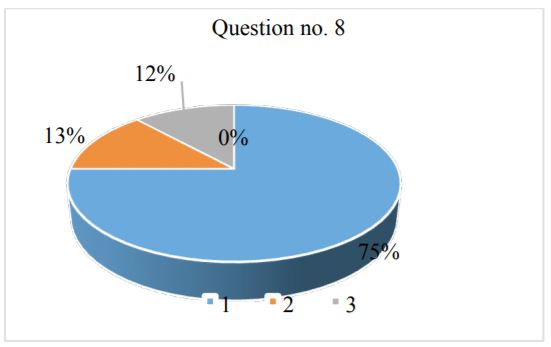
9. What made you decide to practice a sport at the university?
32 students were motivated to go on practicing sports at the university by their desire for movement,
13 for continuing the practiced sport, 11 for learning a new sport and 12 for other reasons. (Fig. 9)
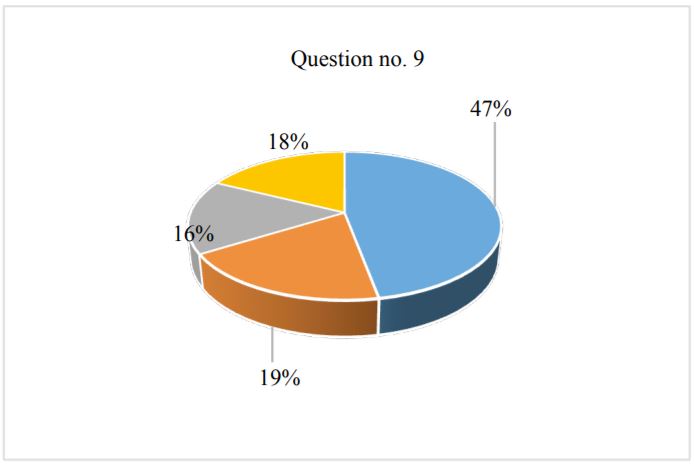
10. Besides the classes at the university, do you practice sports during your leisure time?
With respect to practicing sports during the leisure time, 19 students always practice a sport, 43 sometimes participate in a sport and only 6 respond “never”. (Fig. 10)

11. What other sports would you like to practice, besides the sports you have already chosen?
As regards the choice of a sport other than the one already chosen, 14 students said dance, field tennis 11, swimming 10, fitness 8, football 6, volley 4, badminton 3, no other sport 6. (Fig. 11)

12. Why would you choose it?

As we can notice in the graph, the reasons for choosing another sport are divided. 27 of the questioned students would choose another sport for pleasure, 23 because it seems interesting, and 18 students for its utility. (Fig. 12)
13. What would you improve for classes to be more attractive (for taking pleasure from coming to the gym)?
32 students desire better gym equipment, 14 wish improved ambient, 13 students consider that diversity would make the classes more pleasant, while 9 students wish something else. (Fig. 13)

14. Do you consider the sport as a form of socialization?
Physical education and sports are considered social activities, because they represent a series of features recommending them as factors of socialization and social integration, which results from the responses of the interviewed students (Fig. 14).

15. Although the sport class is facultative, what were your reasons for choosing to practice it?
Pleasure underlies the student’s choice to practice sports, as it is shown by the results obtained from the questionnaire. (Fig. 15)

Discussions and conclusions
After the conducted study, concerning the importance of physical education among students from
non-profile faculties, we have concluded that students consider physical education as an important
activity in their lives, however a very small number of students practice sports outside the class of
physical education. If, before starting the faculty, a very large number of students practiced between 2
and 3 sports disciplines, now we notice a large decrease in the number of those who are engaged in
practicing the sports.
Students consider that sports classes would be more attractive if they benefited from a well-
equipped sports base, a pleasant ambient and a greater diversity in the physical education classes.
Unfortunately, sports games do not catch the particular interest of students anymore, as they would
rather choose sports disciplines as aerobic gymnastics, field tennis, as well as sports such as fitness and
dancesport.
The most common reasons for their disinterest in physical education can be resumed to the lack of
time, indolence, material conditions, and work spaces.
Going beyond these issues, we have noticed from the responses received that sport is practiced for
the pleasure to move, for maintaining an optimal physical condition and for social integration and
socialization.
We believe that physical education should have a mandatory character in the curriculum of the
University of Bucharest.
References
Bota, A., & Șerbănoiu, S. (2000). Teoria educației fizice și sportului. București: Cartea Școlii.
Dragnea, A., Bota, A., Stănescu, M., Tudor, V., Teodorescu, S., & Şerbănoiu, S. (2006). Educaţie fizică - Teorie şi didactică. București: CD Press.
Gulap, M. T. (2014). Study regarding the perception of the Bucharest University’s students over the
importance and role of Physical Education and Sports in their lives. 4th International Congress of Physical Education, Sports and Kinetotherapy.
Kiriţescu, C. (1964), Palestrica – o istorie universală a culturii fizice. București: Editura Uniunii de Cultură Fizică şi Sport.
Novak, A. (1977). Metode statistice în pedagogie și psihologie. București: Editura Didactică și Pedagogică.
Copyright information

This work is licensed under a Creative Commons Attribution-NonCommercial-NoDerivatives 4.0 International License.
About this article
Publication Date
10 June 2016
Article Doi
eBook ISBN
978-1-80296-010-5
Publisher
Future Academy
Volume
11
Print ISBN (optional)
-
Edition Number
1st Edition
Pages
1-509
Subjects
Sports, sport science, physical education
Cite this article as:
Litoi, F. (2016). Study on the Importance of Physical Education and Sports among the Students from Non-Profile Faculties within the University of Bucharest. In V. Grigore, M. Stanescu, & M. Paunescu (Eds.), Physical Education, Sport and Kinetotherapy - ICPESK 2015, vol 11. European Proceedings of Social and Behavioural Sciences (pp. 438-446). Future Academy. https://doi.org/10.15405/epsbs.2016.06.61

